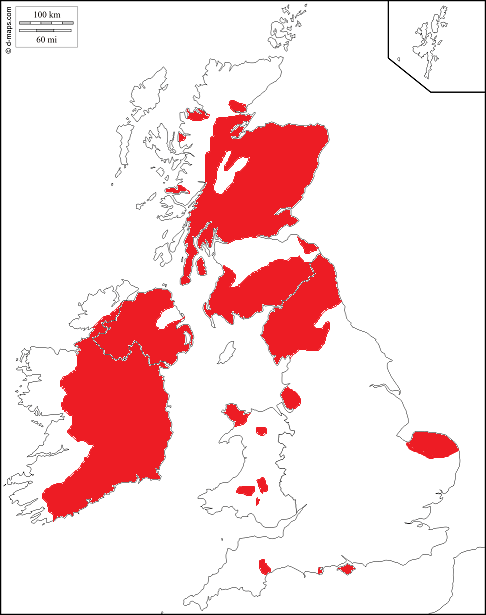How Much Territory Does a Squirrel Need?
Understanding the territorial requirements of squirrels offers insights into their behavior, habitat needs, and ecological importance. Squirrels, known for their agility and adaptability, occupy various environments across the globe. This article explores the concept of territory in squirrels, examining factors such as space utilization, nesting habits, and territorial behaviors.
The Basics of Squirrel Territory
Defining Territory in Squirrels
Territory for squirrels refers to the area that an individual or a group of squirrels actively defend and utilize for activities such as foraging, nesting, and mating. The size of a squirrel’s territory can vary based on factors including species, habitat quality, food availability, and population density. Understanding these factors helps in comprehending how squirrels navigate and thrive in their environments.
Factors Influencing Territory Size
Several factors influence the size of a squirrel’s territory. Food availability is crucial; squirrels require a variety of nuts, seeds, fruits, and vegetation within their territory to sustain their nutritional needs. The quality and abundance of nesting sites also play a significant role; squirrels seek secure locations such as tree cavities, leaf nests, or underground burrows for shelter and reproduction. Social dynamics, including competition for resources and mating opportunities, can lead to varying territory sizes among individuals and between species. Additionally, the presence of predators influences the defensive nature and size of a squirrel’s territory as they seek to minimize risks while maximizing access to essential resources.
Species-Specific Territory Requirements
Tree Squirrels (Sciuridae Family)
Tree squirrels, including the Eastern Gray Squirrel and the Fox Squirrel, typically have territories that vary in size depending on habitat quality and food availability. Eastern Gray Squirrels, for example, may defend territories ranging from a few acres in urban areas to larger areas in forested regions. Their territories include multiple food caches and nesting sites, strategically located to minimize travel distances and maximize survival.
Ground Squirrels (Sciuridae Family)
Ground squirrels, such as the California Ground Squirrel and the Arctic Ground Squirrel, maintain extensive territories that encompass complex burrow systems and expansive foraging areas. These territories are crucial for their survival in open landscapes where they must evade predators and secure food resources efficiently. Ground squirrels often exhibit communal living behaviors, with interconnected burrows and cooperative defense strategies within their territories.
Flying Squirrels (Sciuridae Family)
Flying squirrels, known for their nocturnal habits and gliding abilities, establish territories that include networks of tree cavities and abundant food sources within forested habitats. Their territories may overlap with those of other flying squirrels and tree squirrels, reflecting a dynamic balance of competition and cooperation within ecological niches. Flying squirrels’ territories are essential for accessing seasonal resources and evading diurnal predators through nocturnal activity patterns.
Exploring US Territory: Extent, History, and Significance
The Role of Territory in Squirrel Behavior
Foraging and Food Storage
Squirrels use their territory not only to forage for immediate food sources but also to cache excess food for future consumption. Food caching is a crucial adaptive behavior, particularly in environments with seasonal fluctuations in food availability. By strategically placing food caches within their territories, squirrels mitigate risks of food scarcity and increase their survival chances during winter months or periods of resource scarcity.
Reproduction and Nesting
During the breeding season, squirrels invest heavily in securing suitable territories that offer ample nesting sites and proximity to food resources. Female squirrels select nesting sites based on safety, insulation, and accessibility within their territories. Male squirrels may expand their territories to encompass multiple female nesting areas, maximizing reproductive success while defending against rival males and predators. Nesting sites within territories serve as critical hubs for raising offspring, providing shelter and security during vulnerable stages of development.
Communication and Defense
Squirrels communicate within their territory through a combination of vocalizations, scent markings, and physical displays. Scent glands located on their feet and around their face leave distinct markings on trees, rocks, and other objects within their territory boundaries. Vocal calls vary in tone and intensity, signaling territorial ownership and warning intruders of potential aggression. Physical displays, such as tail flicking and posturing, reinforce territorial boundaries and deter encroachment by competing squirrels or predators. These communication strategies help maintain territory integrity and minimize conflicts while facilitating social interactions within squirrel populations.
Conservation and Management Considerations
Habitat Fragmentation
Human activities, such as urbanization, deforestation, and agricultural expansion, pose significant threats to squirrel territories by fragmenting natural habitats. Fragmentation reduces connectivity between suitable nesting sites, food resources, and protective cover, forcing squirrels to navigate hazardous landscapes with increased exposure to predation and resource scarcity. Conservation efforts focus on preserving and restoring habitat connectivity through land-use planning, wildlife corridors, and habitat restoration projects. By mitigating habitat fragmentation, conservationists aim to sustain viable territories for squirrels and promote population resilience in changing environments.
Urban Adaptation
Some squirrel species, notably the Eastern Gray Squirrel, exhibit remarkable adaptability to urban environments characterized by parks, residential gardens, and green spaces. Urban settings offer diverse food sources, including ornamental fruits, seeds, and human-provided food items, within compact territories. Squirrels leverage vertical structures such as trees and buildings for nesting and food caching, demonstrating behavioral flexibility in response to urbanization pressures. Urban wildlife management strategies prioritize habitat enrichment, predator deterrence, and public education to foster harmonious coexistence between squirrels and human communities.
Conclusion
Understanding how much territory a squirrel needs involves integrating ecological principles, behavioral observations, and conservation strategies to safeguard habitat quality and population viability. By studying squirrel territories across diverse ecosystems, researchers and conservationists can address global challenges such as habitat loss, climate change, and human-wildlife conflicts while promoting sustainable coexistence and biodiversity conservation.
FAQs about Squirrel Territory
1. How large is a squirrel’s territory?
A squirrel’s territory size can range from a few hundred square meters to several acres, depending on species, habitat quality, and resource availability. Tree squirrels may defend smaller territories in urban areas with concentrated food sources, whereas ground squirrels require larger territories to accommodate burrow systems and expansive foraging ranges.
2. Do squirrels share territories?
Some squirrel species, especially tree squirrels and flying squirrels, may exhibit overlapping territories with conspecifics and interspecies interactions. Overlapping territories facilitate cooperative behaviors such as mutual defense, resource sharing, and social grooming while maintaining individual ownership of nesting sites and food caches.
3. How do squirrels mark their territories?
Squirrels use scent glands located on their feet and face to deposit pheromones on trees, rocks, and other prominent objects within their territories. These scent markings serve as olfactory signals of territorial ownership, mating status, and reproductive readiness, guiding social interactions and territorial disputes among individuals.
4. What happens if a squirrel loses its territory?
A squirrel that loses its territory may experience displacement to peripheral or unfamiliar habitats characterized by reduced resource availability and increased competition with established conspecifics. Displaced squirrels must navigate novel environments to establish new territories or integrate into existing social groups, risking predation, starvation, and reproductive exclusion in the process.
5. How do squirrels defend their territories?
Squirrels defend their territories through vocalizations, physical displays, and territorial aggression aimed at intruders, conspecific rivals, and potential predators. Defensive behaviors include tail flicking, chasing, and scent marking to reinforce territorial boundaries, communicate ownership, and deter encroachment within contested areas.


